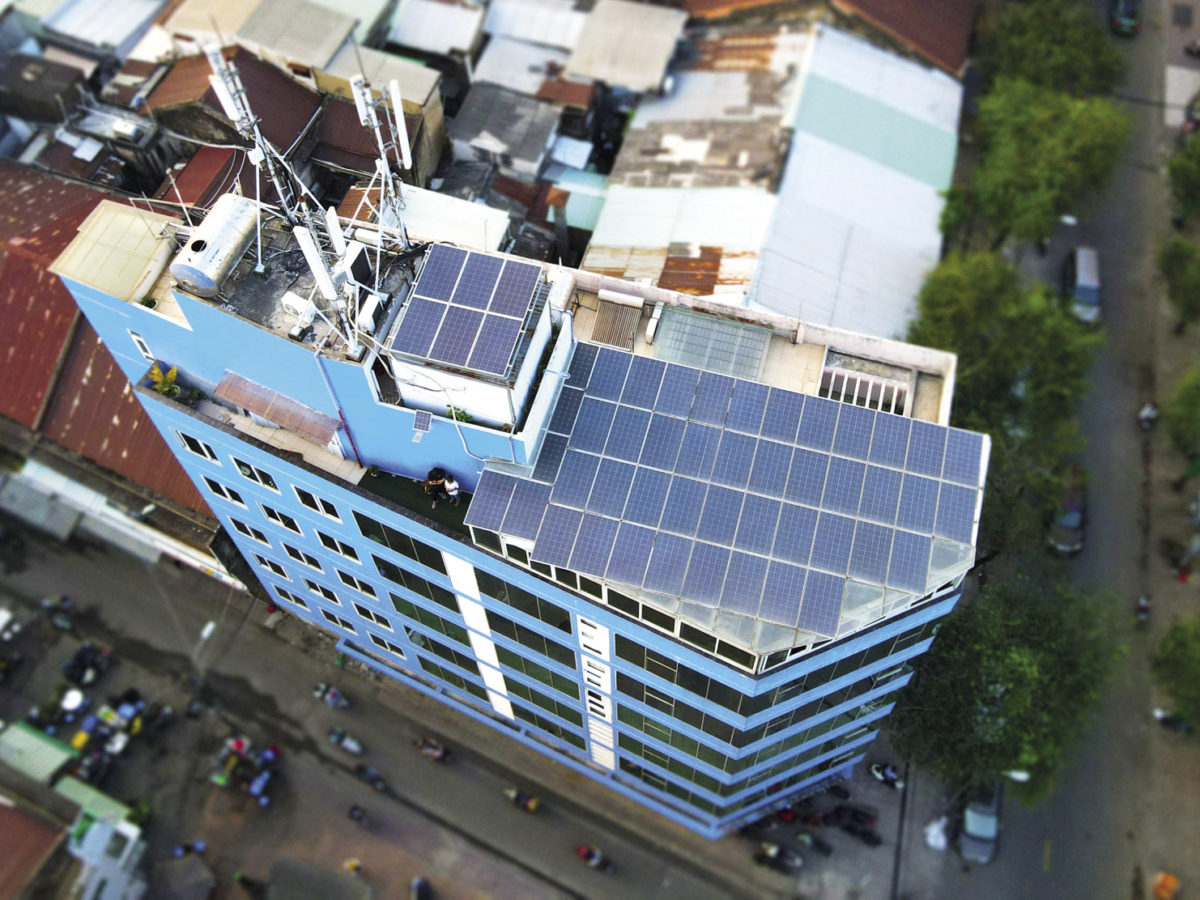From Huawei 2021 Special Edition
Few people with knowledge of what will be required for an economy-wide transition to renewable energy doubt that battery energy storage will play a key role in the energy system of the future. But what is needed and what is wanted from end consumers can often be very different things. As such, the adoption of residential energy storage systems in homes and small businesses has been patchy, even among leading rooftop solar marketplaces.
There are an increasing number of drivers for residential battery storage systems each year. But they do differ from market to market. The picture is a complex one, based on public policy, subsidies, grid characteristics, electricity pricing and market structures – to name but a few. Add to this the way in which consumer preferences vary from market to market, and the complexity in battery adoption drivers is notable.
Inside the market
Despite this complexity, the key drivers for residential battery storage adoption can be summarized as follows:
- Use of “own electrons”: This is both a financial and an “emotional” driver, and is often described by the somewhat unsettling moniker of maximizing “self-consumption.” In markets where there is a sizable gap between the feed-in tariff received for rooftop PV sent back into the grid and the retail rate for electricity consumed in the home, this delta provides a financial incentive for energy storage. There is also an emotional aspect to this, in that consumers want to use “their” solar electrons, generated on their own rooftops. Relatively good levels of self-consumption can be achieved using load shifting and other smart devices. However, there is a threshold to the efficacy of such measures, which can only be overcome through the installation of a battery storage product.
- Provision of backup power: When the lights go out, many households are severely impacted. Outages can cause particular disruption when fridges and freezers go out of function with the loss of grid power, and losses to household communications and entertainment can be inconvenient at best and dangerous at worst. When this is coupled with an increase in extreme weather events, the smooth provision of electricity to a household or small business by virtue of a residential battery system can be a very attractive prospect. Of course, local environmental and grid factors play a major role here, and in places where the grid is particularly robust, such as Germany, backup power is less of a driver for consumers. However, in some key battery storage marketplaces, such as the United States and Australia – two geographically large and developed economies where power outages still feature – the provision of backup power can be a compelling value proposition for homeowners and businesses.
- Contributing to the energy transition: As an increasing number of households see and even experience the impacts of climate change, they feel compelled to make a contribution. Taking control of your energy supply and consumption is one way of doing so, and a battery energy storage system provides an unprecedented opportunity to do so. Distributed battery systems also become more important in terms of grid stability and the ability of electricity distribution networks to absorb very high levels of rooftop PV – itself a necessary feature of a 100% green energy system. As such, residential batteries are likely to play an increasingly important role in the creation of a clean energy future at the distribution network level, and are an important way in which households can play an active role in averting catastrophic climate change.
Consumer drivers
These and other drivers for residential battery storage system adoption play out on the macro level – across various distributed battery marketplaces around the world – but in each market there are discrete versions, each with more tangible value propositions. A household in Vietnam desires backup power, but for different reasons to a consumer in the United States. For an Australian household, the need for a battery may be closely linked to solar feed-in-tariff structures, while in Belgium, existing subsidies provide a significant driver.
Consumers place varying levels of importance not only on the value proposition, but on attributes offered by an ESS supplier. These include brand recognition and trusted service, and extend to size and ease of installation, battery chemistry, and issues linked to the sustainability of the materials. And safety cannot be ignored, as is evident in Germany, where households want to be sure the battery in their basement is “as safe as houses.”
The following three case studies provide insights into the wider drivers and in particular, customer choices in key residential battery storage marketplaces.
Germany: Optimizing energy costs
Germany has long had a strong market for residential energy storage systems, and with thousands of rooftop PV installations in the country reaching the end of their feed-in-tariff agreements in the next few years, strong growth is expected to continue. Installers are forecasting 20-30% year-on-year growth for the market in 2021.
Local distributor Wagner Solar has been working with Huawei’s latest battery offering, the LUNA2000 solution, for several months already and sees this product as a strong value prospect for the German market.
“We believe that the Huawei LUNA2000 solution is closing a gap. We now have one system by one manufacturer which makes service and support easier for the installer and end customer,” says Stefan Rösch, product manager at Wagner Solar. “Huawei’s brand awareness in the consumer business and their reputation for constant innovation in the solar space, makes it easy to place in the German market.”
More from our partners
Rösch points to a recent report published by EUPD Research that found 79% of end customers in Germany want to increase consumption of their self-generated electricity. Taking a system installed in the western German town of Schermbeck, as an example – where a 10 kWh LUNA2000 battery system accompanies Huawei SUN2000-8KTL-M1 inverters and 20 x 400 W PV modules, along with 12 x 450 Wp optimizers – he explains: “The typical customer in Germany has recently built or renovated their own house, and constantly optimizing their energy costs is a very important factor. So the main motivator to install a battery storage system is still electricity self-sufficiency. The LUNA2000 energy storage by Huawei makes this possible as it also includes optional backup power.”
Belgium: Storage subsidy leader
Belgium is among the first countries to offer a subsidy for the installation of residential energy storage systems. At up to €300/kWh, the scheme promises to reduce the payback period from seven to four years. “Without the LUNA battery the energy self-consumption for residential rooftop PV averages about 15%, and unused power is sold to the grid for 0.04 cents,” explains Robin Maes, founder of local installer MR Solar. “After installing the battery, the owner can raise self-consumption to 65-75% and use stored energy at night instead of buying at 0.25 cents.”
Maes expects similar subsidy models to be adopted across Europe in the near future, as more regions and system owners realize the added value of self-consumption. “Homeowners with solar systems need to store energy for use later into the evening,” he explains. “There is no time to waste energy by feeding it into the grid.”
MR Solar has chosen Huawei for several residential projects in Belgium, including one in the town of Beerse. Here a 10 kWh LUNA battery system was added to a solar installation already operating with Huawei three-phase inverters. And as demand for residential energy storage picks up, MR Solar expects Huawei to remain a key player in the industry and in successful installations. “Huawei FusionSolar provides an all-in-one solution – one service center for all your questions and warranty concerns, one energy storage solution, one inverter fits grid & backup operations, one optimizer, and one software to monitor your solar system,” Maes explains. “Together with easy plug and play installation, this brings great benefit to installer and home owner.”
Vietnam: Rooftop PV powerhouse
Vietnam has seen an unprecedented boom in rooftop solar recently, with installations in 2020 amounting to more than 9 GWp. In Ho Chi Minh City alone, local installer Red Sun Company estimates there are more than 200,000 houses with suitable rooftop conditions for solar, as well as a wealth of office buildings, apartment blocks, supermarkets, traditional markets, hospitals, schools and more.
Benny Diep, director of Red Sun Company, cites multiple reasons for Vietnam’s rooftop solar boom, in particular rising electricity prices, falling solar installation costs, and strong public awareness of both the benefits of residential solar and the need for environmental protection and emissions reduction.
Meanwhile, rising energy demand, falling feed-in-tariff rates and concern over grid constraints mean that adding energy storage is an increasingly attractive proposition in the country’s rooftop PV sector. “Vietnam’s energy consumption continues to grow as the economy recovers from the pandemic. Meanwhile, we have seen the PV market explode since 2020 to support this growth,” says Diep. “It is a great opportunity to start focusing on self-consumption and the application of energy storage solutions.”
To demonstrate the advantages afforded by incorporating energy storage into residential solar, Diep points to a 7.37 kW PV system Red Sun installed in Ho Chi Minh City, featuring Huawei’s Smart Energy controller, Smart String Energy Storage System and optimizers. The system was shown to generate 995 kWh per month on average, and the installer estimates the customer will recover their costs in less than five years.
Using Huawei optimizers to control shading impact increases the system’s energy yield by 15%-30% and allows modules with different capacities to be integrated in one string. the Smart String ESS is capable of 100% discharge, can charge from the grid, and means the system can provide power 24 hours a day: increasingly valuable for consumers in Vietnam concerned about rising prices. “The price of electricity after 400 kWh is very high,” explains Diep. “Therefore, solar power users want to be able to store electricity generated during the day to use at night, minimizing the amount of electricity used from the grid.”
This content is protected by copyright and may not be reused. If you want to cooperate with us and would like to reuse some of our content, please contact: editors@pv-magazine.com.



By submitting this form you agree to pv magazine using your data for the purposes of publishing your comment.
Your personal data will only be disclosed or otherwise transmitted to third parties for the purposes of spam filtering or if this is necessary for technical maintenance of the website. Any other transfer to third parties will not take place unless this is justified on the basis of applicable data protection regulations or if pv magazine is legally obliged to do so.
You may revoke this consent at any time with effect for the future, in which case your personal data will be deleted immediately. Otherwise, your data will be deleted if pv magazine has processed your request or the purpose of data storage is fulfilled.
Further information on data privacy can be found in our Data Protection Policy.